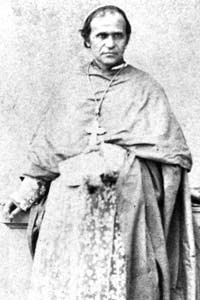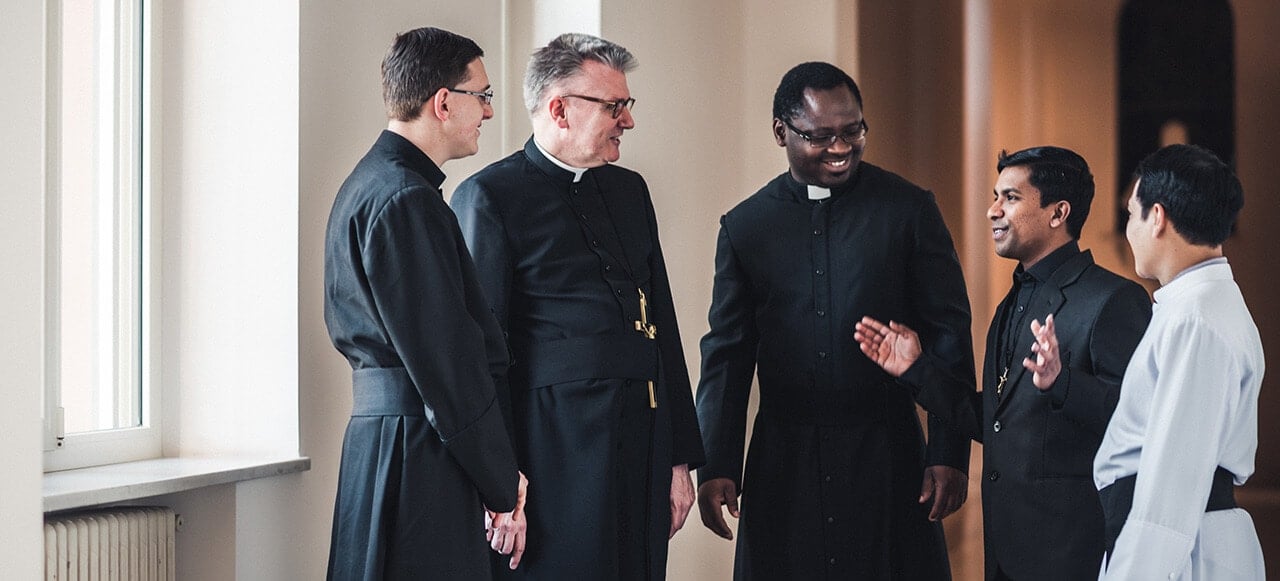Nowadays epidemics are rather rare. Modern measures of prevention and quarantining carriers of a contagious virus have succeeded in controlling these plagues almost completely. It was not the same in the 19th century. Young Father De Mazenod himself came close to becoming a victim of typhus in 1814, when he was caring for Austrian prisoners of war. He attributed his cure to the prayers of the children of the Christian Youth Association which he had established in Aix.
India especially, with its overpopulation, has known several cruel epidemics. The Oblate missionaries, who arrived in Ceylon in 1847, had to face cholera less than three years after their establishment in Jaffna. During the five years that it ran rampant, this dreadful evil ravaged almost all their missions. The population remained in a kind of stupor. The schools were deserted; work was stopped. The missionaries did their best to look after the patients, to bury the dead and to comfort the survivors. They went through the streets ringing a small bell to inform the dying that the grace of God was passing. When cholera reached the large town of Jaffna, in November 1853, it was the caste of fishermen that was the first to be struck. A thousand of the city’s six thousand Catholics perished. Most of the Oblates were stricken with the disease, but only one succumbed with his patients, Fr. Victor Lacombe.
Father Jean Bescou, for one, was an example of their dedication. One day he came upon a non-Christian woman who was dying, abandoned by all. He wanted to speak to her about the true God and the eternal happiness that she could enjoy after her death, but she furiously pushed him away. While leaving, the priest started to entrust this soul to the Blessed Virgin pleading silently: “My good Mother, you who are the refuge of sinners, save her.” He had hardly completed his prayer when the woman called him back. She was transformed. He instructed her briefly, baptized her, and before his eyes her soul was taken up to heaven.
The Christians, encouraged by the Oblates, raised an unceasing ardent plea to Our Lady. Touched by the many prayers of her children, the Blessed Virgin finally extended her powerful arm and suddenly the cholera ended. The circumstances of this extraordinary favour remained engraved in the memory of the missionaries who lived these events. Here is how Fr. Pierre Duchaussois describes them:

Etienne Semeria, OMI
“Pius IX had just defined the dogma of the Immaculate Conception in Rome. Mgr. C. J. Eugene de Mazenod, bishop of Marseilles and founder of the Oblates, was among the 200 cardinals and bishops who joined the pope for this solemn proclamation. Upon his return, he at once wrote to his missionaries in America, Africa and Asia. His letter reached Fr. Etienne Semeria, the superior in Jaffna, on February 17, 1855, the anniversary of the approval of the Oblate Constitutions by Leo XII. After having given a fraternal accolade to his brothers, who had gathered for the festivity, Fr. Semeria read this letter. The Founder ended his letter saying: We must rejoice to have made known in advance this great and incomparable truth by the title we bear, Oblates of Mary Immaculate, and redouble our confidence and love towards our very beautiful, good, and powerful Patroness.
The superior then proposed a Triduum to the Immaculate to ask her for the end of this already too long epidemic. The 5th to the 7th of March were fixed for this Marian celebration. A statue of the Immaculate was placed amid candles and flowers on a special altar in the sanctuary of the Jaffna cathedral, which was already dedicated to Mary. There was a procession each day. The prayers were fervent, but the cholera continued. The afternoon of the last day, after two more dead had just been buried, the final procession started. A storm was imminent. The procession began nevertheless. Catholics, Protestants, and people belonging to other religions decorated their dwellings for Mary’s passage. As soon as Fr. Semeria had made the act of consecration to Mary in the name of all the people, a wave of wellbeing was felt to come down from the throne of the Virgin upon the assembly. People ran to the hospitals. All the cholera patients were smiling. The next day, forty patients left the hospital, followed soon after by the three hundred others. The miracle of the Immaculate Conception had brought back life. All acclaimed it, Protestants and Catholics, as well as the followers of other religions.” (Under the Fires of Ceylon, p. 89).
André DORVAL, OMI
